 Be Inspired Blog - Arizona
Be Inspired Blog - Arizona

Making Sense of Mulch
Mulching—or covering a garden surface with a layer of mulch material—provides plenty of advantages to your summer landscape. We’re all (sort of) accustomed to the hot, dry summers here in Arizona, and while our native plants can tolerate our desert climate (once their roots have been established), the sweltering sun can prove too much for other plants. If you haven’t yet, now is the time to lay down some material before the summer heat really hits. Don’t worry, we’re here to help you make sense of mulch!

Benefits of Mulch
The main advantage of mulch is that it acts as a barrier between the sky and the soil, helping to retain soil moisture and keep your garden’s roots cool and comfortable. In doing so, they also block the sunshine that pesky weeds need to grow and spread, reducing their presence in your garden. Another great benefit of mulching your landscape is that it can double as a fertilizer as it breaks down, depending on the material you choose.
Not only are these materials functional, but they also provide an aesthetic benefit! Choose from a variety of different sizes, textures, and colors to find one that best suits your garden style. You’ll appreciate how mulch can make your landscape look tidy and polished--and help to reduce your water consumption!
Types of Mulch
There are plenty of types of mulch available to sprinkle around your garden, all with different purposes. Even compost can be considered a mulch! Here are three types that we recommend and what they’re best for:
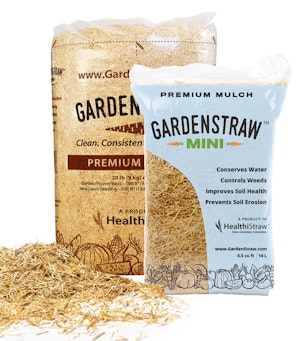
GardenStraw Premium Mulch (by HealthiStraw)
This sustainable and biodegradable wheat straw mulch has been specifically designed with the urban, vegetable gardener in mind. Using natural and additive free methods, it is cleaned with enhanced filtration to remove dust and nearly all wheat seeds. This straw mulch conserves water by up to 50%, stabilizes soil moisture and temperature, suppresses weeds, protects plants from disease, and improves soil health by increasing aeration, while reducing compaction and erosion. GardenStraw is clean, light, easy to use and aids in growing a healthier, more vibrant garden. For best results, apply a 2-3” thick layer in gardens or a ¼” thick layer for lawn seeding applications. Available in 2 sizes: 3 cubic foot and 0.5 cubic foot.
To learn more about GardenStraw premium mulch and how best to use it in your garden, click the button below to view or download our informational flyer.
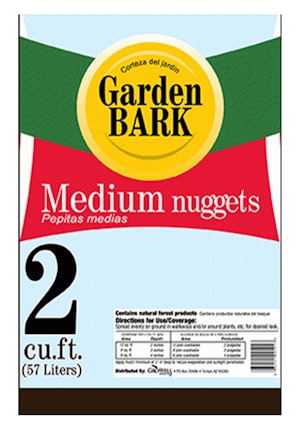 GardenTime Garden Bark - Medium Nuggets
GardenTime Garden Bark - Medium Nuggets
These medium pine bark nuggets are a lovely decorative groundcover for all areas of your landscape. Nuggets are easy to apply to walkways, garden beds, and around your home and patio, helping to retain moisture and suppress weed growth. While pine bark is known for its longevity, it will organically enrich the soil when it eventually does break down. Since nuggets tend to float in pooling water, avoid using them in areas where water tends to pool or flow.
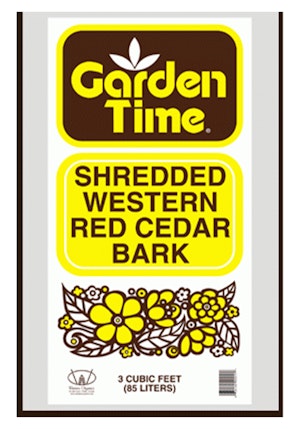 GardenTime Shredded Western Red Cedar Bark
GardenTime Shredded Western Red Cedar Bark
Shredded bark is another common and effective ground cover for your garden. Red Cedar mulch is a popular choice for its attractive reddish color and natural look. It leaves a lovely aroma of cedar while helping to retain soil moisture and suppress weeds. Garden Time Shredded Western Red Cedar Bark is finely-textured, perfect for creating a light protective layer around smaller annuals and perennials. Cedar is also naturally pest-resistant and doesn’t decay as quickly as other materials.
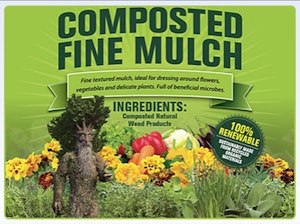 Tank's Fine Composted Mulch
Tank's Fine Composted Mulch
Tank's Fine Composted Mulch is a garden amendment produced from the woody remnants of organic compost, ingeniously designed to be free of weed seeds through a high-temperature composting process. This mulch serves a multipurpose role in gardens: it conserves water, prevents erosion, and enriches soil with organic matter, improving structure, nutrition, and moisture retention.
Ideal for vegetable beds, flower gardens, and citrus tree surroundings, it regulates soil temperature, keeping it cool in summer and warm in winter. Beyond traditional mulching, it offers an innovative solution for creating smooth, dense pathways in gardens, capable of compacting and knitting together with mycelium and beneficial soil bacteria to form a living ground cover. Sold in convenient sizes and recommended at a depth of 2-4 inches, Tank's Fine Composted Mulch enhances garden vitality and aesthetics, demonstrating a commitment to sustainability and effective garden management.
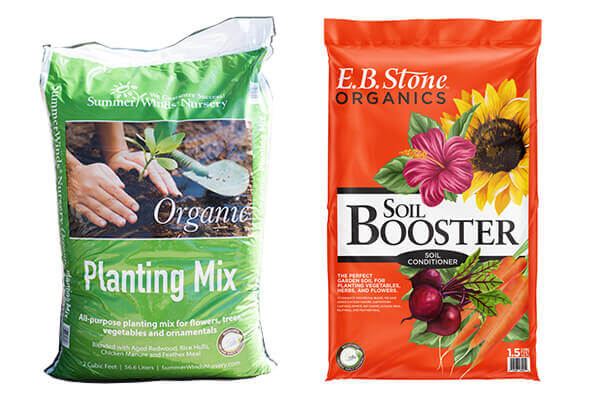
Mulch Amendments
If you don’t want to use a shell or wood-based mulch but still want to provide your plants some added moisture retention, we recommend using either E.B. Stone Organics Soil Booster or SummerWinds Planting Mix. These amendments can be used as a layer of mulch to help protect your plants from the heat. Plus, as it decomposes throughout the summer, it enriches and conditions the soil, providing your plants with extra nutrients--and it doesn’t require any fall maintenance or clean up!
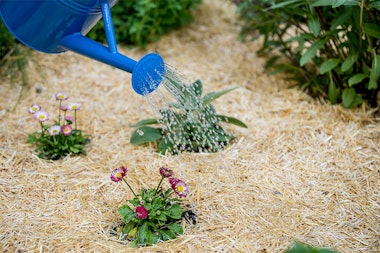 How Much Mulch Do I Need?
How Much Mulch Do I Need?
The first mulching question we tend to get from our customers is “which type of mulch should I buy?”, which is then usually followed by “...and how much of it do I need?”. Finding the right material is only half the battle. Knowing how much of it to buy can also be a challenge if you’re less experienced with mulching!
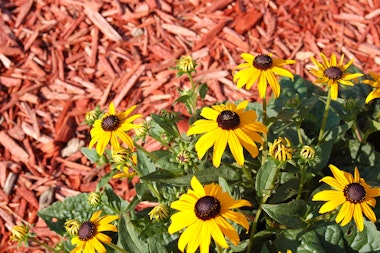
First of all, consider how thick of a layer you’re putting down. Generally, two or three inches of finer mulches is appropriate for filling garden beds, surrounding annual and perennial plants, and dressing walkways. Some plants can even get away with just a one-inch layer. Laying it on too thick can attract fungus and be harmful to plants, so surround them with a thinner layer and avoid letting the mulch touch the plant foliage or stems. If the purpose of the mulch is solely for suppressing weeds or grass and you’re not growing plants in the area, go with a thick layer of five or six inches.
Next, you can estimate how much you’ll need by following these steps:
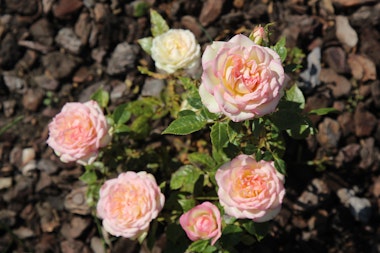
- Using a measuring tape, measure the length and width of each area you wish to cover, multiplying the two numbers together to find the area’s square footage.
- If you are covering more than one area in your garden, add the square footage for each area together to find the total square footage you wish to cover. Let’s assume, as an example, the total area comes to a total of 100 square feet.
- Determine the depth based on how many inches of mulch you want to use. In most instances, we recommend a depth of 2-3 inches.
- Divide the depth by 12 to convert the depth from inches to feet. For instance, a depth of 3 inches, divided by 12, equals 0.25 feet.
- Multiply the square footage of the area by the depth in feet to find the required cubic footage of mulch. In this case, our equation is 100 square feet x 0.25 feet, which equals 25 cubic feet of mulch.
- With this amount in mind, you should be able to calculate how many bags of mulch you’ll need to purchase. Depending on the product you choose, most bags range in size from 1.5 - 2 cu. feet per bag.
Online Calculator: Alternatively, you can skip steps 4-6 and enter the measurements you took into our online soil calculator to help determine how much mulch you need!
Covering areas of your property with mulch does wonders to tie the landscape together, all while helping your garden plants survive another hot Arizona summer. If you’re in need of materials or need help figuring out how much to purchase, visit one of your local SummerWinds Arizona locations! We are also offering home delivery and curbside pickup at this time.

